Regarding audio systems, subwoofers are crucial in delivering deep, low-frequency bass that adds richness and power to the sound. But did you know that the design of the subwoofer enclosure, also known as the sub-box design, is just as crucial as the woofer itself? A well-designed enclosure can maximize the bass response, enhance sound quality, and protect the woofer from damage.
This comprehensive guide will explore the importance of sub-enclosures, the available types, and the factors to consider when designing one. We will provide a step-by-step guide to help you design the perfect enclosure for your woofer. When choosing a woofer, carefully note the manufacturer's recommended enclosure size, mainly if your vehicle has limited space.
When designing a subwoofer enclosure, the box volume tells you how big your enclosure needs to be for maximum performance from the sub. The box shown in this article was intended for the trunk of my Nissan sedan, so I wanted to make sure it wouldn't take up too much space.
The Importance of a Subwoofer Enclosure in Your Audio System

A subwoofer enclosure is much more than just a box that houses the subwoofer. It plays a critical role in the subwoofer's performance, the bass's quality, and the overall audio experience. Here are some reasons why the enclosure is of utmost importance:
- Maximizing Bass Response: A subwoofer enclosure creates a sealed space for the subwoofer, preventing sound waves from canceling each other. This containment of sound waves enhances the low-frequency response, resulting in deep, powerful bass.
- Enhancing Sound Quality: The enclosure's design helps prevent distortion and port noise, resulting in cleaner, more accurate bass reproduction. A well-designed enclosure ensures the subwoofer operates within optimal parameters, improving sound quality.
- Improving Efficiency: The size and type of enclosure can impact the subwoofer's efficiency. Choosing the right enclosure design allows you to optimize the subwoofer's performance, ensuring it operates at its full potential while using the least power.
Deciding on the Size of the Enclosure

Now that we have considered the various factors, it's time to decide on the size of the sub-enclosure. When designing a subwoofer enclosure, The enclosure size will depend on the subwoofer's parameters, space availability, and sound quality preferences. Here's how to determine the size of the enclosure:
Internal Volume
The enclosure's internal volume is determined based on the subwoofer's parameters, including the air volume the subwoofer requires for optimal performance. By calculating the internal volume, you can design an enclosure that complements the subwoofer's parameters, ensuring optimized bass response.
Subwoofer Size and Space Availability

Sealed or Ported Enclosure
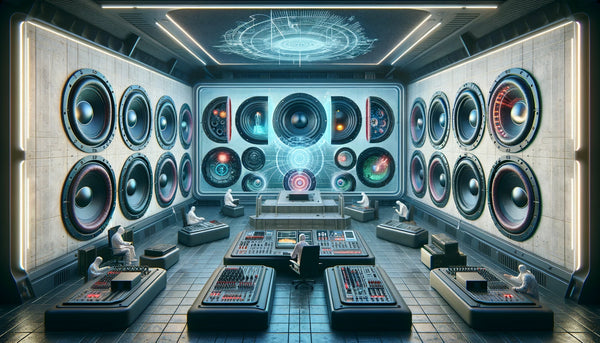
Based on the subwoofer's parameters, sound quality preferences, and space availability, decide whether a sealed or ported enclosure design is the best fit. Sealed enclosures are more forgiving of subwoofer parameters, making them versatile for different subwoofer models, while large vented enclosures emphasize low-frequency extension, requiring larger internal volume.
Enclosure Design Software:
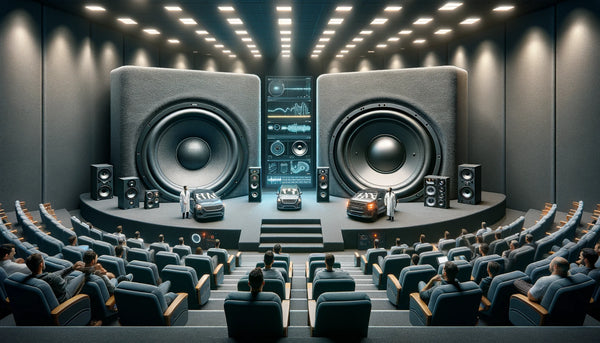
Utilize enclosure design software, such as the program WinISD, to plan the size of the enclosure box for the sub. These design programs help calculate enclosure dimensions, port size, tuning frequency, and internal volume, ensuring the design is optimized for the woofer's parameters.
How does the size of the enclosure impact the sound output?
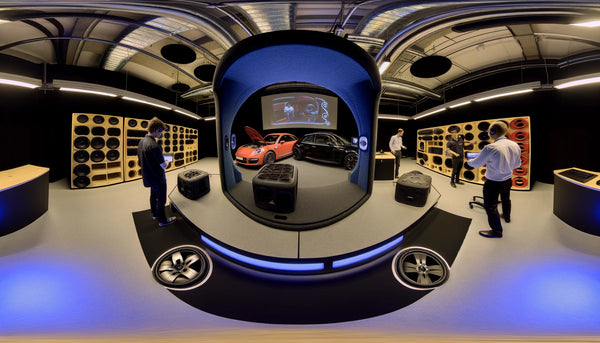
Now that we have determined the size of the rectangular box enclosure let's explore how the size of the cubic foot enclosure impacts the woofer's sound output. The size of the enclosure, internal volume, port size, and length all play a role in the bass response of the sub. Here's how enclosure size influences sound output: By increasing the size of the simple sealed enclosure to 1.55 cubic feet, we can achieve a total octave increase in the low bass frequency, resulting in a more robust and immersive audio experience. Additionally, with the larger enclosure, the vented design, including a port or vent, delivers more decibels (DB) output at lower frequencies, providing even greater sound intensity. The final design of the woofer box is crucial in optimizing the sound output and ensuring the desired audio performance.
The correlation between sub-enclosure size and bass response

The enclosure's size directly affects the subwoofer's low bass response. Here are some key factors to consider:
Larger Enclosure
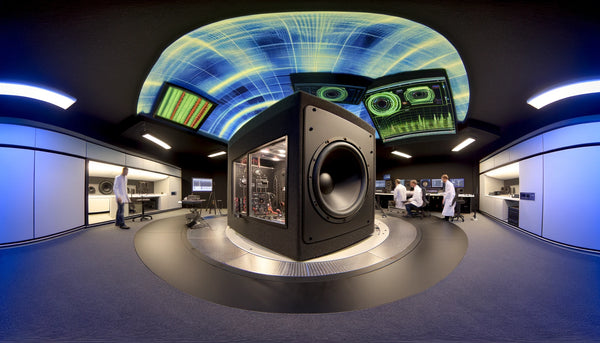
Deeper Bass: A larger enclosure size allows for more air volume, resulting in deeper bass response. If you prefer powerful, resonating bass, a larger enclosure may be the better choice, provided space is available. However, it's important to consider space constraints when determining the enclosure size.
Smaller Enclosure
Tighter Bass: A smaller enclosure size provides a tighter bass response. A smaller size box design may be ideal if you prioritize accuracy and precision in bass reproduction, especially if space is limited.
Sealed Enclosures and Bass Response:
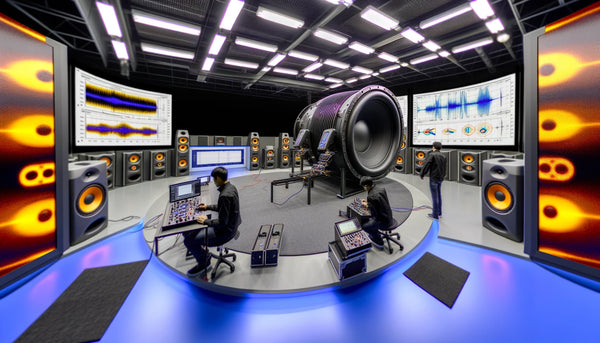
Sealed enclosures produce a smoother bass response with tight, accurate bass reproduction. The sealed design of the enclosure minimizes bass resonance, resulting in bass that blends seamlessly with the audio system.
Ported Enclosures and Bass Response:
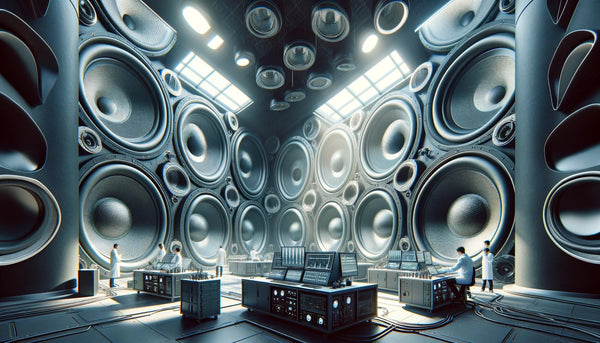
Ported enclosures emphasize low bass response, with the port tuning frequency influencing the bass output. The port's size and port length and the enclosure's internal dimensions impact the woofer's response. It's essential to tune the ported enclosure carefully to achieve the desired bass response, balancing low bass response and port noise.
Air Space and Bass Response:

The air space inside the enclosure, determined by the enclosure size, impacts the low bass response of the subwoofer. The enclosure size should be optimized for the woofer's parameters, ensuring the air space available provides the woofer with the necessary air volume to achieve the desired bass response.
Number of Drivers:
Multiple drivers can be incorporated into your subwoofer box plan for increased output.
What are the key factors to consider when designing a subwoofer enclosure?

When designing a subwoofer enclosure, key factors to consider include the size and shape of the enclosure, the type and thickness of the material used, proper sealing and insulation, porting options for optimal bass response, and ensuring compatibility with the specific subwoofer's requirements.
Step-by-step Guide to Designing a Subwoofer Enclosure
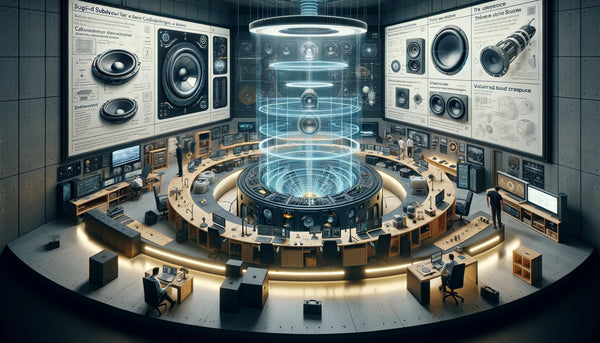
Now that we understand the importance of subwoofer enclosures, the available types, and the factors to consider, let's dive into a step-by-step guide to help you design the perfect enclosure for your subwoofer.
Measuring and Planning the Design around the Woofer parameters and airspace
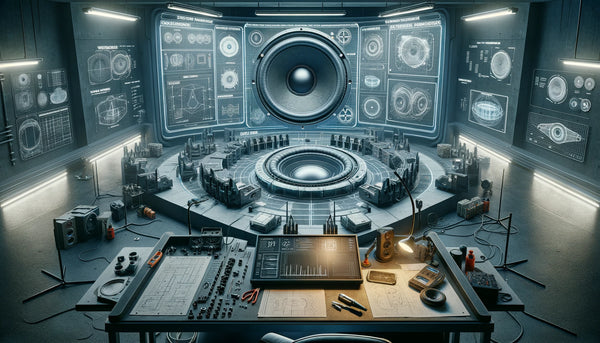
After Designing a Subwoofer Enclosure, measuring the subwoofer's parameters, internal volume, and tuning frequency requirements is essential. Here are the steps to follow:
Measure the Subwoofer's Parameters
Start by measuring the dimensions of the subwoofer, including width, height, and depth. Note these measurements, which will be used to plan the enclosure size.
Determine the Airspace
Calculate the airspace needed based on the subwoofer's parameters, such as the volume of air required for optimal performance. This airspace calculation will guide the enclosure's design, ensuring it complements the subwoofer's parameters.
Plan the Internal Dimensions
Based on the airspace calculation, plan the internal dimensions of the enclosure, considering the subwoofer's requirements. This includes the width, height, depth of the enclosure, and thickness of the wood panels.
Determine the Port Area (square inch)
If you plan to design a ported enclosure, calculate the size of the port area and length of the port, considering the tuning frequency of the enclosure design. The port area and the enclosure's internal volume impact the subwoofer's bass response.
Tips for Enhancing the DB Performance of Your Subwoofer Enclosure

To further enhance the performance of your subwoofer enclosure, consider the following tips:
- Choose the Right Subwoofer: Select a woofer that complements your enclosure design, considering power handling and frequency response parameters. The woofer should be compatible with the enclosure dimensions, airspace, and tuning frequency requirements.
- Use Medium Density Fiberboard (MDF): Opt for medium-density fiberboard (MDF) when constructing the enclosure, as it provides better sound quality than other materials. MDF's density helps control internal resonances, producing a cleaner response.
- Seal the Enclosure Properly: Ensure the enclosure is sealed properly, preventing air leaks from affecting the overall response. Use caulk, gaskets, or other sealing materials, as needed, to enhance the enclosure's air-tightness, ensuring the response remains accurate.
- Implement Proper Internal Dimensions: Follow the design plan, internal volume, cubic inches, and box volume calculations, ensuring the enclosure design matches the subwoofer's parameters.
- Apply Sound-deadening Material: Consider applying sound-deadening material, such as acoustic foam or sound-damping sheets, inside the enclosure to reduce internal resonances and improve sound quality. Sound-deadening materials help absorb sound waves, minimizing internal reflections and producing cleaner, more accurate audio reproduction.
Conclusion
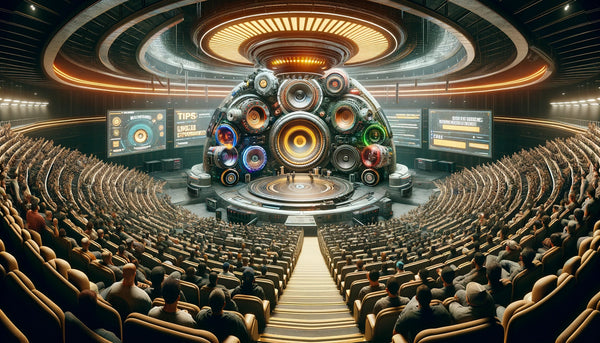
Designing a subwoofer enclosure requires careful consideration of various factors, such as the desired sound quality, available space, and subwoofer specifications. The type and size of the enclosure play a crucial role in determining the sound output and bass response. Following a step-by-step guide and making necessary adjustments can create an optimized subwoofer enclosure that enhances the audio experience. However, it's essential to be aware of common mistakes to avoid during the design process. Check out our other guides for more information on the Principles of Subwoofer Box Design.
For more detailed information on enhancing the performance of your subwoofer enclosure and avoiding common mistakes, check out our comprehensive guide on subwoofer enclosure design. It's time to take your audio setup to the next level!





